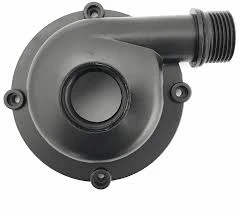Mobile:+86-311-808-126-83
Email:info@ydcastings.com
male end cap
Exploring the Concept of Male End Caps A Comprehensive Guide
In the world of manufacturing and engineering, the importance of each component in a pipeline or a mechanical system cannot be overstated. One such crucial component is the male end cap. Male end caps serve distinct functions, and their design can vary widely depending on the application and industry standards. This article seeks to explore the concept of male end caps, their applications, benefits, and considerations in choosing the right type for a specific project.
What is a Male End Cap?
A male end cap is a fitting that is designed to close off the end of a pipe or a tube. Unlike female end caps, which have internal threads or features to accept other components, male end caps are characterized by their protruding threads or fittings that allow them to connect to other components in a pipeline. Typically made from various materials including plastic, metal, or alloys, male end caps are essential in systems where secure closure is needed to prevent leaks, dust ingress, or contamination.
Applications of Male End Caps
Male end caps are used in a variety of industries and are integral to different systems
1. Plumbing In residential and commercial plumbing, male end caps are often used to cap off water lines or pipes that are not in use, preventing leakage and maintaining pressure within the system.
2. Automotive In the automotive industry, these caps can be found in fuel lines or coolant systems, where they protect sensitive components from debris and moisture.
3. Construction During construction, male end caps are used to seal structural elements, ensuring that placed materials remain intact until the project is finalized.
4. HVAC Systems In heating, ventilation, and air conditioning (HVAC) systems, these caps are vital for closing off ducts and maintaining airflow integrity.
Benefits of Using Male End Caps
male end cap

1. Leak Prevention Male end caps provide robust sealing solutions that minimize the risk of leaks, ensuring systems operate efficiently and safely.
2. Versatility Available in various materials and sizes, male end caps can be tailored to suit multiple applications and environments, making them highly versatile.
3. Cost-Effective Utilizing male end caps in systems can be a cost-effective measure to prevent future repairs or replacements resulting from leaks or contamination.
4. Ease of Installation Most male end caps are designed for easy installation, which can save time during the fabrication or assembly processes.
Choosing the Right Male End Cap
When selecting a male end cap for a specific application, several factors should be considered
1. Material Compatibility It’s essential to choose a material that will withstand the conditions of the environment it will be used in, such as temperature variations, chemical exposure, and pressure levels.
2. Size and Fit Proper sizing ensures a secure fit on the corresponding pipe or tube. Incorrect sizing can lead to leaks or failure of the system.
3. Thread Standards Depending on the application, ensuring that the male end cap meets specific thread standards (such as NPT, BSP, etc.) is crucial for compatibility.
4. Regulatory Compliance In many industries, especially those dealing with health and safety, selecting components that meet regulatory standards is essential.
Conclusion
In summary, male end caps play a vital role in numerous applications across various industries. They not only provide a solution for sealing pipes and containers but also enhance the performance and reliability of systems. By understanding the types, benefits, and considerations involved in selecting male end caps, engineers and manufacturers can ensure their systems operate effectively, safely, and economically. With ongoing advancements in materials and manufacturing processes, the future of male end caps looks promising, offering even better solutions to meet the evolving needs of industries.
-
Why Should You Invest in Superior Pump Castings for Your Equipment?NewsJun.09,2025
-
Unlock Performance Potential with Stainless Impellers and Aluminum End CapsNewsJun.09,2025
-
Revolutionize Your Machinery with Superior Cast Iron and Aluminum ComponentsNewsJun.09,2025
-
Revolutionize Fluid Dynamics with Premium Pump ComponentsNewsJun.09,2025
-
Optimizing Industrial Systems with Essential Valve ComponentsNewsJun.09,2025
-
Elevate Grid Efficiency with High-Precision Power CastingsNewsJun.09,2025











